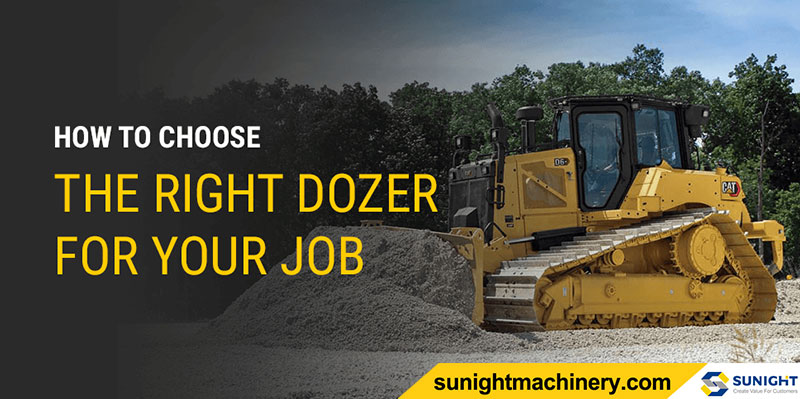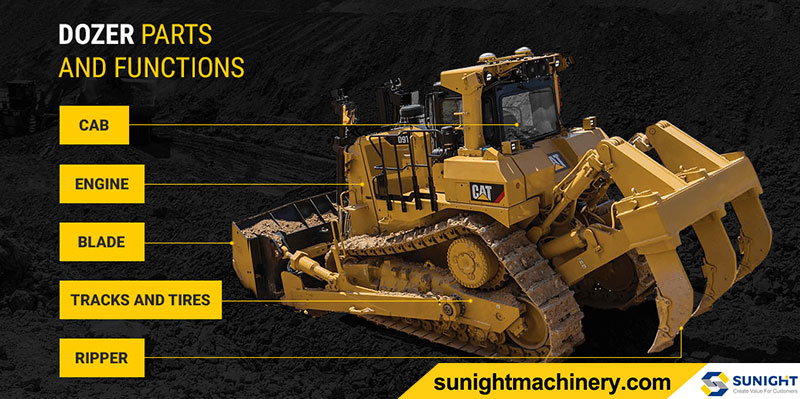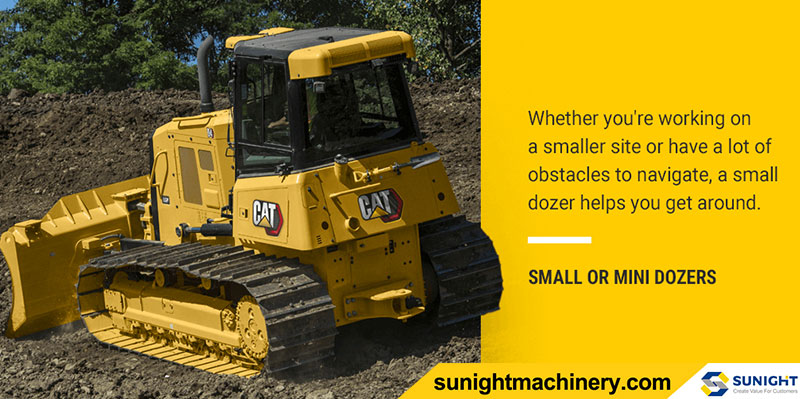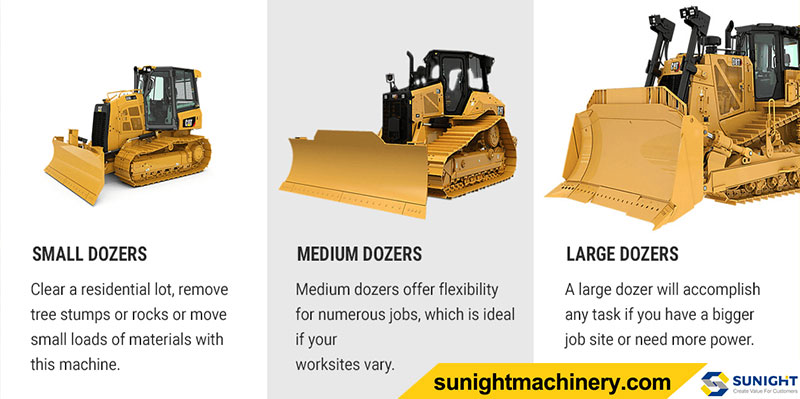Getting the right tool for the job is essential, no matter the scale of the project you’re doing. Don’t make any compromises on heavy machinery, especially when it comes to choosing the right dozer for the task. Whether you’ve been in the construction or engineering industry for years or you’re new to the heavy machinery scene, knowing a bit about bulldozers will help you figure out what type of dozer you need.
Check out the guide below to learn how to choose the right dozer, whether your assignment is big or small. We’ll walk you through common uses of dozers, components and attachments and other information that will help you make the best choice for your job site.
Bulldozers, otherwise known as dozers, are primarily used for pushing and moving earth, rocks, rubble, sand and various materials. Because of their functionality, industries like construction, farming, mining, roadbuilding and wrecking find plenty of purposes for dozers. Those sectors benefit from the various uses of dozers, such as:
These standard applications of dozers will make quick and easy work of many tasks in comparison to having individuals complete them. Instead of having a crew do all the physical labor of spreading materials or performing different jobs, use a dozer. This machine can limit strenuous work and decrease the potential for injury. Follow all safety guidelines for operating heavy machinery and equipment to ensure you create a safe job site.
If you know you need one of these machines for your job, you must also know how to choose the right bulldozer. A few considerations will help you decide which model, size, attachments and buying or renting options are right for you:
All parts of a dozer come together to create a functioning machine. Every aspect is essential, so knowing a bit about each component will help you understand how to choose the right dozer. Here are the primary elements of any dozer:
A dozer’s tracks, which resemble those on a military tank, help the machine move. Because dozers are incredibly heavy, their tracks need a large surface area to keep them from sinking into the ground. The track consists of the track frame, rollers and assembly. A chain surrounds the frame, which creates a flat surface so the rollers can move across various surfaces.
Certain dozer models feature tires instead of tracks. It’s essential not to use those on soft surfaces, like sand or mud, to avoid sinking. A dozer with tires puts the machine’s weight on the wheel’s four points, which is why the machine can sink into soft ground. Tracks disperse the load across the surface, making them suitable even for use on numerous types of soft surfaces.
A dozer’s blade does all the lifting and moving and consists of a heavy metal plate. Certain blade varieties will have wings on the sides that help the dozer push larger loads of materials. The dozer’s frame, such as a C-frame or push frame, holds the blade and can tilt or angle it.
Plenty of dozer blades can complete various tasks, but the most common type of blade associated with a dozer is a curved model that can push earth and other materials.
Situated at the back of a dozer, a ripper breaks up dense earth and materials. It looks like a claw with either a single- or multi-shank design, which specifies how many prongs the ripper has.
Not every job needs a dozer ripper, but it’s useful for breaking down materials that you need to move. The farming industry also uses rippers to break up farmland and make it easier to plant and grow crops.
A dozer completes heavy moving and lifting jobs, meaning it needs a powerful engine. As you select a dozer, consider an engine with lower levels of emissions to meet standards set by the Environmental Protection Agency (EPA). The exact engine specs for the dozer you select will depend on its size, features and status as new or used.
The cab is where the operator sits. It houses the controls and keeps the operator safe and comfortable. Look for dozer cabs that reduce sound and absorb the impact of operating the machinery, especially if you’ll be working on uneven terrain. While those features are essential no matter how long the operator will be in the cab, you should definitely prioritize them if the driver will be working long hours. These features allow for the most comfort.
The blade is the dozer’s main attachment. There are a handful of options to choose from, depending on your needs. For your next project, consider these types of dozer blades:
Those attachments have various functions and ranges of movement. Understanding them will help you choose the best blade for your dozer. Depending on what the blade’s style is and how it’s attached to the dozer, you can adjust its:
Along with various attachments and blades, there are three main types of dozers you can choose from for your specific job. Each serves a different purpose and comes with benefits for every industry. Consider each choice from this quick guide to dozer types:
Also known as a track dozer, a crawler looks like a tractor. The tracks provide traction and mobility on uneven terrain, and the blade is heavy enough to push or haul bulky materials and objects. Because of their power and maneuverability, crawler dozers are ideal for jobs in places like:
Wheel dozers — or tire dozers — feature tires instead of tracks. You can operate this machine on a smaller axis than you could one with tracks, making it easy to maneuver. While that aspect sounds like it’d be useful for smaller areas, note that wheel dozers are often larger than crawler dozers.
The wheels make this machine an excellent option for sensitive ground. Dozer tracks are typically metal, meaning they could damage certain surfaces. In contrast, wheel dozers have tires that aren’t as likely to ruin paved or sensitive surfaces. Remember, though, that you don’t want to use a wheel dozer on too soft of a surface because you risk sinking. Instead, use it for projects in locations like: